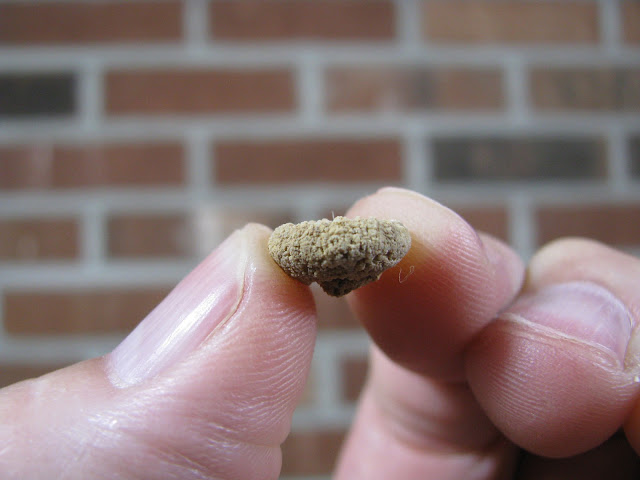These next coral specimens from the Jeffersonville limestone near Louisville, KY I did not find myself but rather I purchased them from a seller on E-bay. Below are four small sections of what I believe are Striatopora bellistriata.
While the specimens were sent to me with only a label stating Striatopora sp., I am fairly certain these are S. bellistriata. In Stumm's book "Silurian and Devonian Corals of the Falls of the Ohio". I found only two reliable species listed on page 69 and plate 75. The first possible species, S. cavernosa, can be ruled out due to the description requiring that the:
"Corallites ... opening almost at right angles to branches"The specimens I have do not show that growth habit. Instead the corallites open at an angle to the branches similar to Stumm's description of S. bellistriata:
"Corallites opening obliquely to surface, 2-3mm in diameter. Calyx walls erect or slightly spreading..."
There are three other species listed but they appear to have minor differences to S. bellistriata or are too poorly preserved to distinguish otherwise.
Here is a closer view of one of the coral sections.
And a couple of natural cross sections of the branches.
These specimens are from the Jeffersonville formation (Devonian, Eifelian stage) and come from near Louisville, KY
References: Stumm, E. C. (1964). Silurian and Devonian corals of the falls of the Ohio. New York: Geological Society of America.




















































